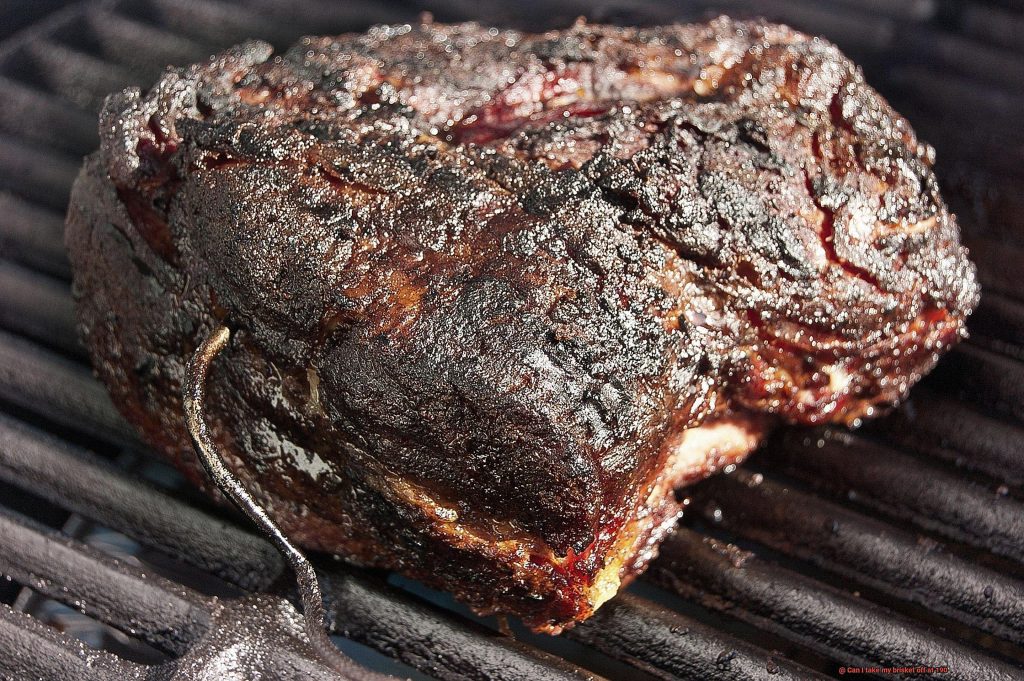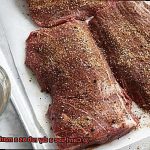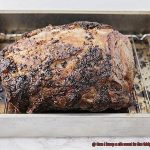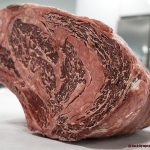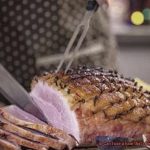Are you a fan of mouthwatering, melt-in-your-mouth brisket? Do you find yourself constantly experimenting with new techniques to make your brisket the best it can be, but still unsure about when to take it off the smoker or grill? Well, fret not. You’re not alone in this predicament. Many backyard pitmasters share the same concern and are left wondering if 190°F is the magic number for their beloved brisket.
However, seasoned BBQ masters and experienced pitmasters advise against taking your brisket off at 190°F. But why is this such a big deal? What happens if you do take it off at this temperature, and what temperature should you aim for instead?
In this blog post, we’ll explore the ins and outs of the world of brisket and answer the critical question: “Can I take my brisket off at 190?” We’ll delve into the science behind how different temperatures affect your brisket’s texture and flavor. We’ll also debunk any myths surrounding taking your brisket off too early, highlight potential pitfalls you may encounter, and reveal the optimal temperature to take your brisket off.
So sit tight, get ready to elevate your brisket game to new heights, and read on to discover how to achieve that perfect juicy tenderness every time.
Contents
What is Brisket?
If you’re a meat lover, brisket needs no introduction. This cut of beef comes from the lower chest area of the cow and is widely popular for its rich flavor and tender texture when cooked right. Brisket is a tough and fibrous cut that requires long, slow cooking to break down the collagen and connective tissues.
There are two main types of brisket: the flat and the point. The flat is a leaner cut with a more uniform shape, while the point is a fattier cut with a triangular shape. Both cuts can be used for smoking and barbecuing, but the point is often preferred by pitmasters for its juiciness and flavor.
To turn brisket into a delicious meal, low and slow cooking is the way to go. This means cooking the meat at a temperature range of 225°F to 275°F for several hours until it reaches an internal temperature of 195°F to 205°F. This slow cooking process breaks down the tough fibers and renders the fat, resulting in meat that’s tender and full of flavor.
However, cooking brisket requires precision and personal preference plays a crucial role in determining when to take it off the grill or smoker. Some people prefer their brisket to be more firm or have a denser texture, in which case taking it off at a lower temperature of 190°F may be suitable. On the other hand, if you prefer your brisket to be more tender and fall off the bone, then cooking it until it reaches the higher temperature range would be necessary.
When selecting a brisket, look for one with a thick layer of fat on one side, as this will help keep the meat moist during cooking. It’s also important to choose a brisket with even thickness to ensure it cooks evenly.
Brisket Cooking Temperature
First and foremost, it’s essential to understand that brisket is a tough and fibrous cut of meat that requires patience and a low and slow cooking method to achieve optimal texture and flavor. So, when should you take your brisket off the heat?
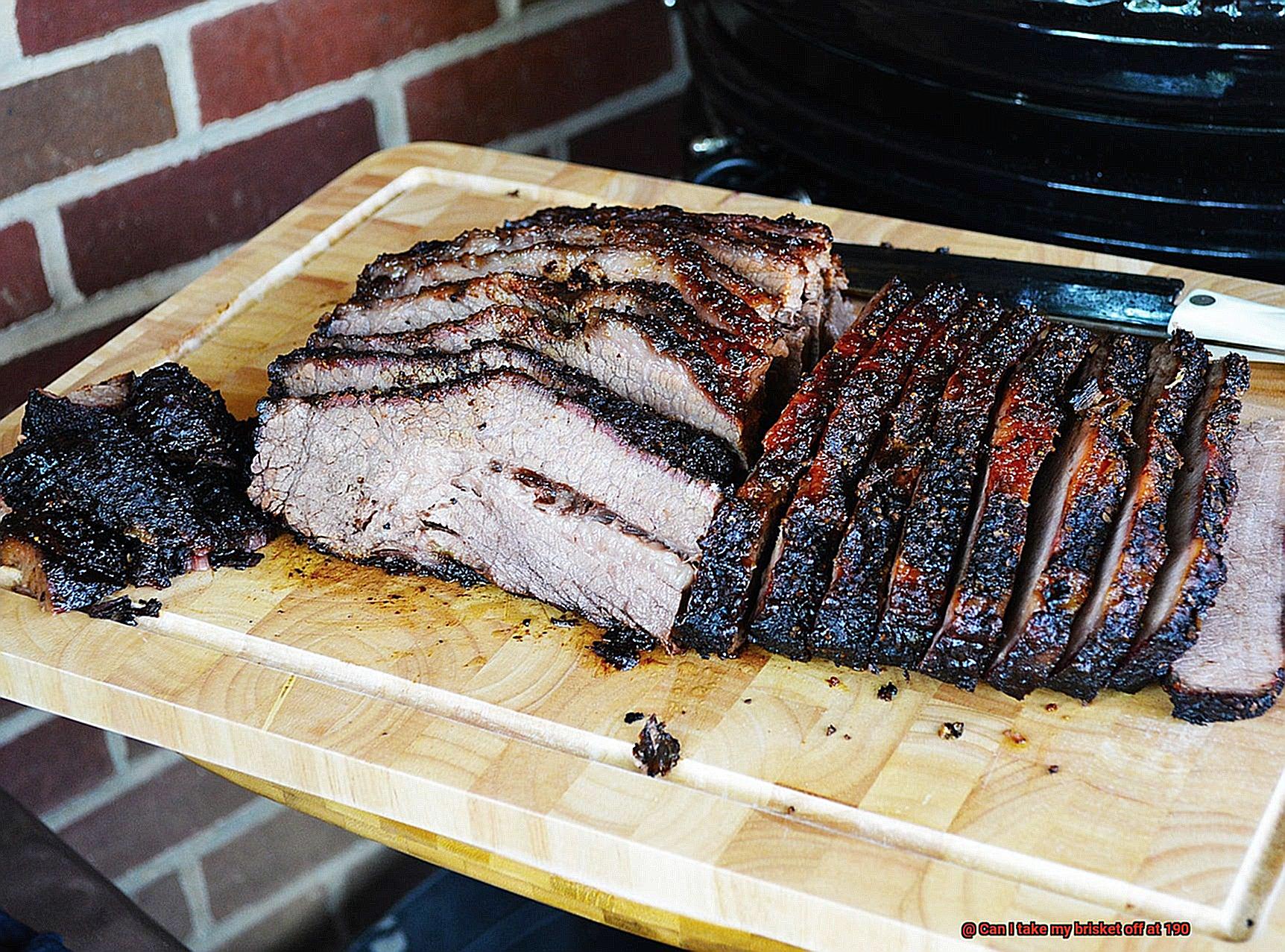
The general consensus among experts is that your brisket should reach an internal temperature of 195 to 205 degrees Fahrenheit. However, some pitmasters swear by taking their brisket off at a slightly lower temperature of around 190 degrees Fahrenheit.
Confused? Don’t be. Every brisket is different, and various factors like size, smoker or grill type, and outside temperature can affect cooking time and temperature. It’s crucial to monitor your brisket closely with a quality meat thermometer.
Insert the thermometer into the thickest part of the brisket, ensuring that it doesn’t touch any bones. This will help you keep track of the internal temperature and remove it from heat at precisely the right moment.
Once you’ve reached your desired temperature, don’t skip the resting period. Let your brisket rest for at least 30 minutes before slicing. This allows the juices to redistribute throughout the meat, resulting in a more tender and flavorful final product.
Factors to Consider when Taking the Brisket off at 190°F
You’ve been eagerly awaiting the moment to take your brisket off the grill. The tantalizing aroma and tender meat have your mouth watering. However, before you do, there are crucial factors to consider that will impact the final result of your brisket.
Firstly, the size of your brisket plays a significant role in determining when it’s ready. Smaller briskets may reach an internal temperature of 190°F faster than larger ones. Make sure to monitor the temperature of all parts of the meat to ensure even cooking.
Secondly, keep in mind your desired level of tenderness. Do you want your brisket to melt in your mouth, or do you prefer it to have a bit of chew? Adjust your cooking time accordingly by leaving it on the grill for a longer period if you desire a more tender result.
Your choice of smoker or grill also affects how quickly your brisket cooks. Different smokers and grills may have varying temperatures that can impact cooking time. Keep an eye on the temperature throughout the cooking process to ensure that your brisket is cooking at the right temperature.
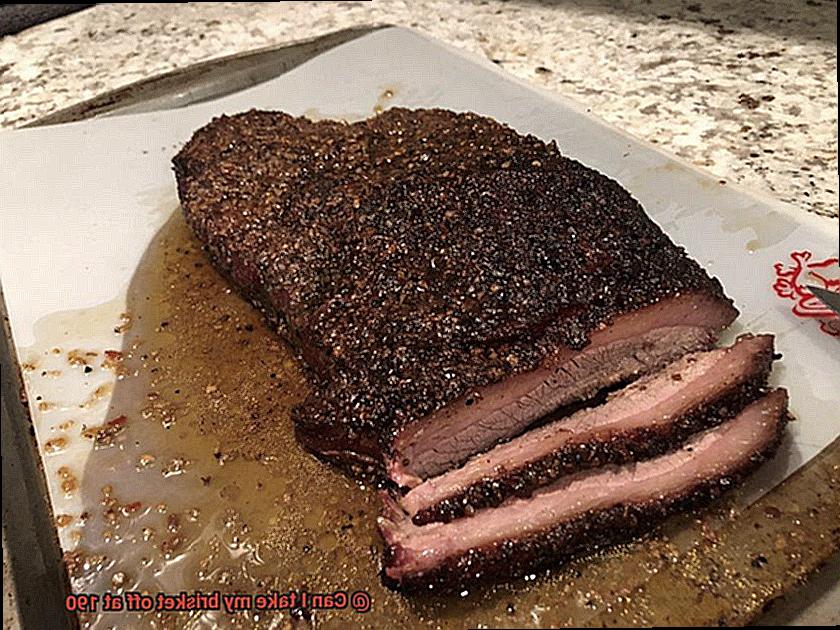
Additionally, the cut of meat you’re using can impact how long it takes for your brisket to reach 190°F. Some cuts have more fat or connective tissue that requires breaking down before becoming tender. These cuts may require more time and patience.
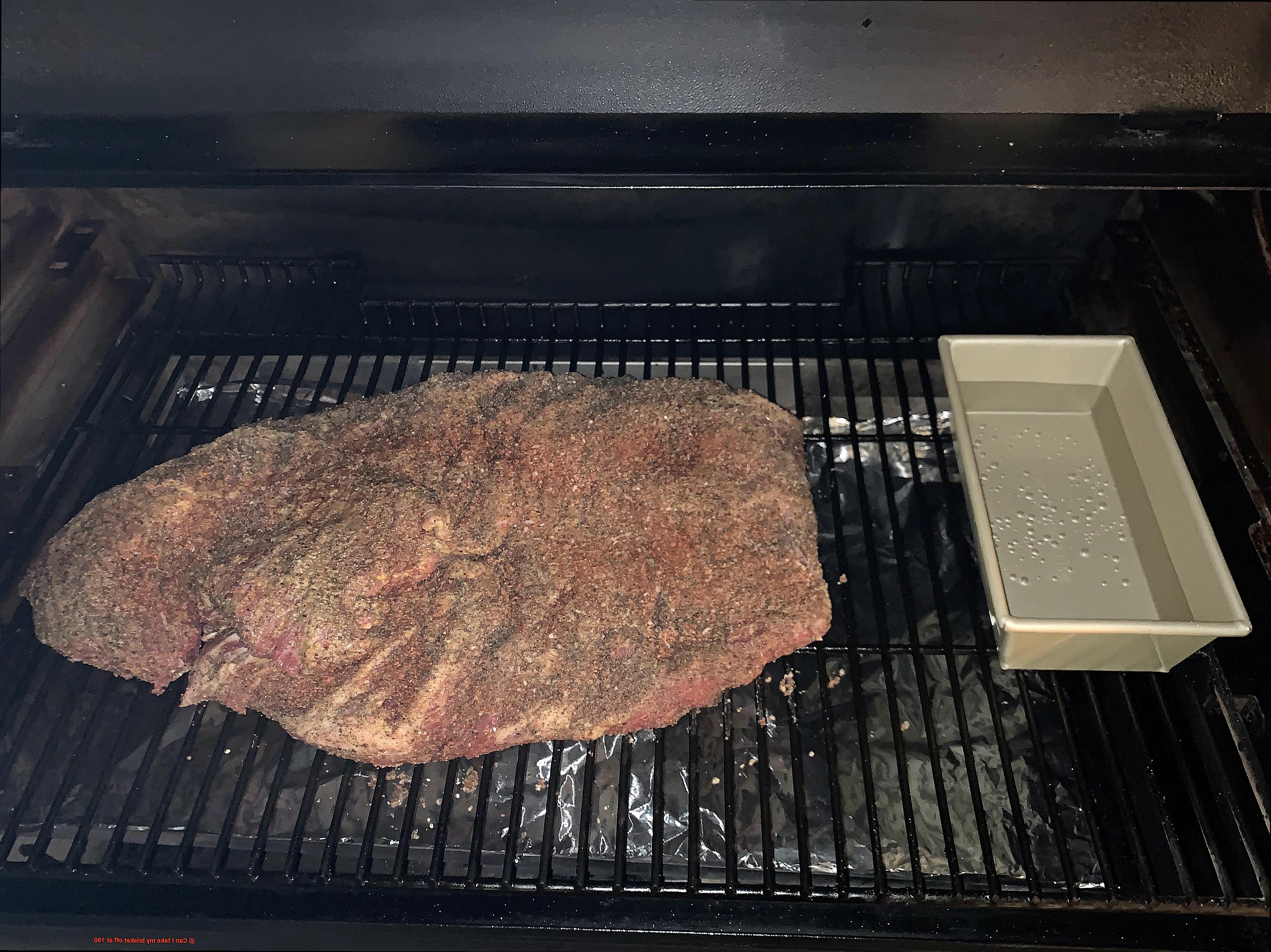
Lastly, every brisket is unique and may require different cooking times and temperatures. Use a meat thermometer to check the internal temperature regularly and adjust accordingly.
Type of Brisket
Let’s dive in and explore the two main types of brisket: the point cut and the flat cut.
First up, we have the point cut. This type of brisket is known for its rich marbling with fat, which results in juicy and flavorful meat. However, cooking the point cut evenly can be a bit tricky and may require some extra effort. If you’re up for the challenge, the point cut can be an excellent choice for a mouthwatering meal.
On the other hand, we have the flat cut. This leaner type of brisket is easier to cook and is a popular choice for beginners. However, if not cooked properly, it can end up dry and tough. So, if you opt for the flat cut, pay close attention to your temperature and cooking time.
When it comes to determining whether your brisket is ready to come off the grill at 190 degrees Fahrenheit, keep in mind that it depends on both the type and size of your meat. As a general rule of thumb, the flat cut can usually be taken off at this temperature, while the point cut may require more time to allow the fat to render and break down.
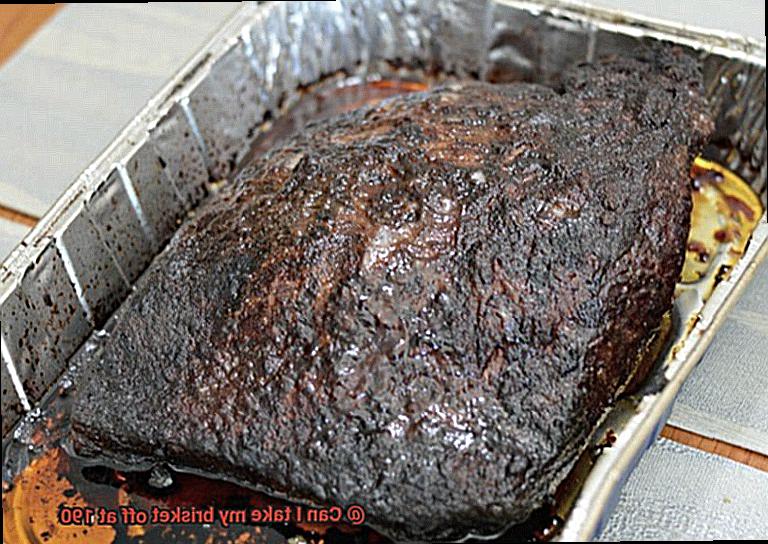
But don’t rely solely on temperature. Use a meat thermometer to check multiple places within your brisket to ensure it’s cooked to perfection. Remember that a smaller brisket may be ready at 190 degrees Fahrenheit while a larger one may need more time.
Desired Texture of the Brisket
The first step in creating an excellent brisket texture is cooking low and slow for an extended period. This allows the meat to break down and become tender while retaining its moisture. The result? A melt-in-your-mouth sensation that will leave you in a state of BBQ bliss.
Next up, the internal temperature of your brisket plays a significant role in determining its texture. Most pitmasters recommend taking the brisket off the grill when it reaches an internal temperature of 195-205°F. However, some experienced grillers swear by taking it off at 190°F for a firmer texture.
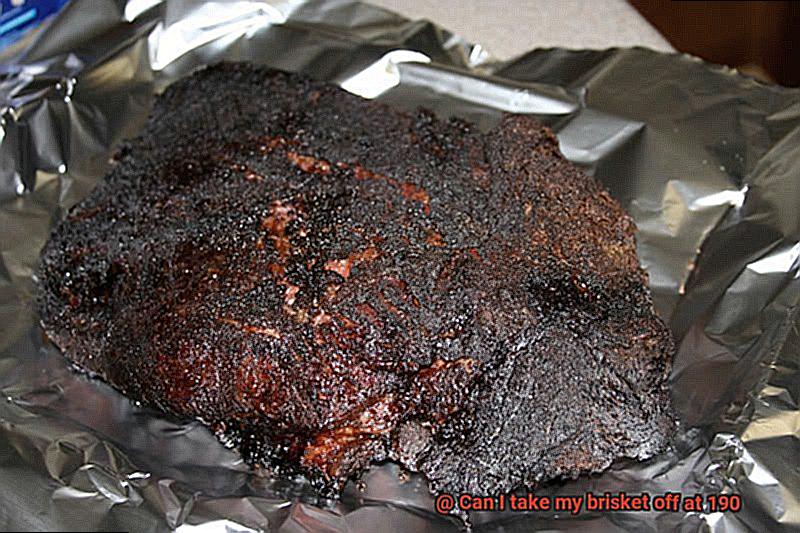
It’s essential to note that taking your brisket off at 190°F may produce a firmer texture, but it may not be as tender or juicy as when taken off at a higher temperature. The choice ultimately comes down to personal preference and experimentation.
To help you decide, here are some key factors to consider:
- If you prefer a more tender and juicy brisket, then taking it off between 195-205°F would be best.
- If you like a firmer and slightly drier texture, then taking it off at 190°F can produce desirable results.
- Keep in mind that cooking time, temperature, and personal preference all play a role in achieving the ideal texture.
Monitoring Internal Temperature Using a Meat Thermometer
To ensure it’s cooked to perfection, monitoring the internal temperature is crucial. This is where a meat thermometer comes in handy – it’s one of the best tools for the job.
Using a meat thermometer may seem intimidating, but it’s actually quite simple. The first step is to ensure that it’s calibrated correctly according to the manufacturer’s instructions. Then, insert the thermometer into the thickest part of the brisket, avoiding any bones as this can give an inaccurate reading. Leave it in place for a few seconds until the temperature stabilizes.
But why is monitoring the internal temperature so important? Well, achieving the perfect texture and tenderness requires a low and slow cooking process. This means that your brisket needs to reach a specific internal temperature range to break down the collagen and become melt-in-your-mouth delicious. Most pitmasters recommend aiming for an internal temperature range of 195-205°F for optimal tenderness and juiciness. However, some experienced grillers prefer taking it off at 190°F for a firmer texture.
Once your brisket has reached your desired internal temperature, it’s essential to let it rest for at least 30 minutes before slicing into it. This allows the juices to redistribute throughout the meat and ensures a more flavorful and moist end product.
To summarize, using a meat thermometer is a simple yet effective way to monitor the internal temperature of your brisket and achieve that perfect texture and tenderness. Here are some key takeaways:
- Calibrate your meat thermometer before use
- Insert it into the thickest part of the brisket, avoiding any bones
- Aim for an internal temperature range of 195-205°F for optimal tenderness and juiciness
- Let your brisket rest for at least 30 minutes before slicing into it
Personal Preference for Taking the Brisket off at 190°F
Among the many choices you’ll face is when to take the brisket off the grill. While most people aim for an internal temperature range of 195-205°F, there’s a growing contingent who prefer to remove it at 190°F.
For one, taking the brisket off at 190°F ensures a tender and juicy meat. At this temperature, the connective tissues within the brisket have broken down, making it easier to slice and chew. Additionally, removing it at this temperature allows for a shorter cooking time, which reduces the risk of overcooking and drying out the meat.
But not everyone agrees with this approach. Some grill masters insist on leaving the brisket on until it reaches a higher temperature, such as 200°F or even 205°F. They argue that this results in a more flavorful and moist meat due to the increased breakdown of connective tissues and rendering of fat.
So, what’s the verdict? Ultimately, it comes down to personal preference and experience. There’s no right or wrong answer when it comes to taking brisket off the grill. It’s all about finding what works best for you and your taste buds.
If you’re new to grilling brisket or just want to try something new, why not experiment with different temperatures and cooking times? Keep a careful eye on your meat thermometer and adjust your technique as needed until you find that elusive sweet spot of tenderness and flavor.
8Er9Hdnd50Q” >
Conclusion
As the saying goes, “low and slow” is the key to cooking a delicious brisket. But when it comes to taking it off the heat, opinions are divided. While some BBQ enthusiasts swear by 190°F as the sweet spot for tender and juicy meat, others argue that it’s too low.
So, what’s the verdict? Well, it depends on your personal preference and experimentation. Brisket is a tough cut that requires time and patience to break down the collagen and connective tissues. Most pitmasters agree that an internal temperature of 195-205°F is ideal for achieving optimal tenderness and juiciness.
However, if you prefer a firmer texture or want to reduce the risk of overcooking and drying out your meat, taking your brisket off at 190°F may be worth considering. Keep in mind that factors such as size, type of brisket, smoker or grill type, and personal taste all play a role in determining when to remove your brisket from the heat.
To ensure accuracy, use a quality meat thermometer to monitor your brisket closely throughout the cooking process. And don’t forget to let it rest for at least 30 minutes before slicing into it – this allows the juices to redistribute evenly throughout the meat.
In conclusion, there’s no right or wrong answer when it comes to taking your brisket off at 190°F. It all boils down to experimentation and finding what works best for you.

